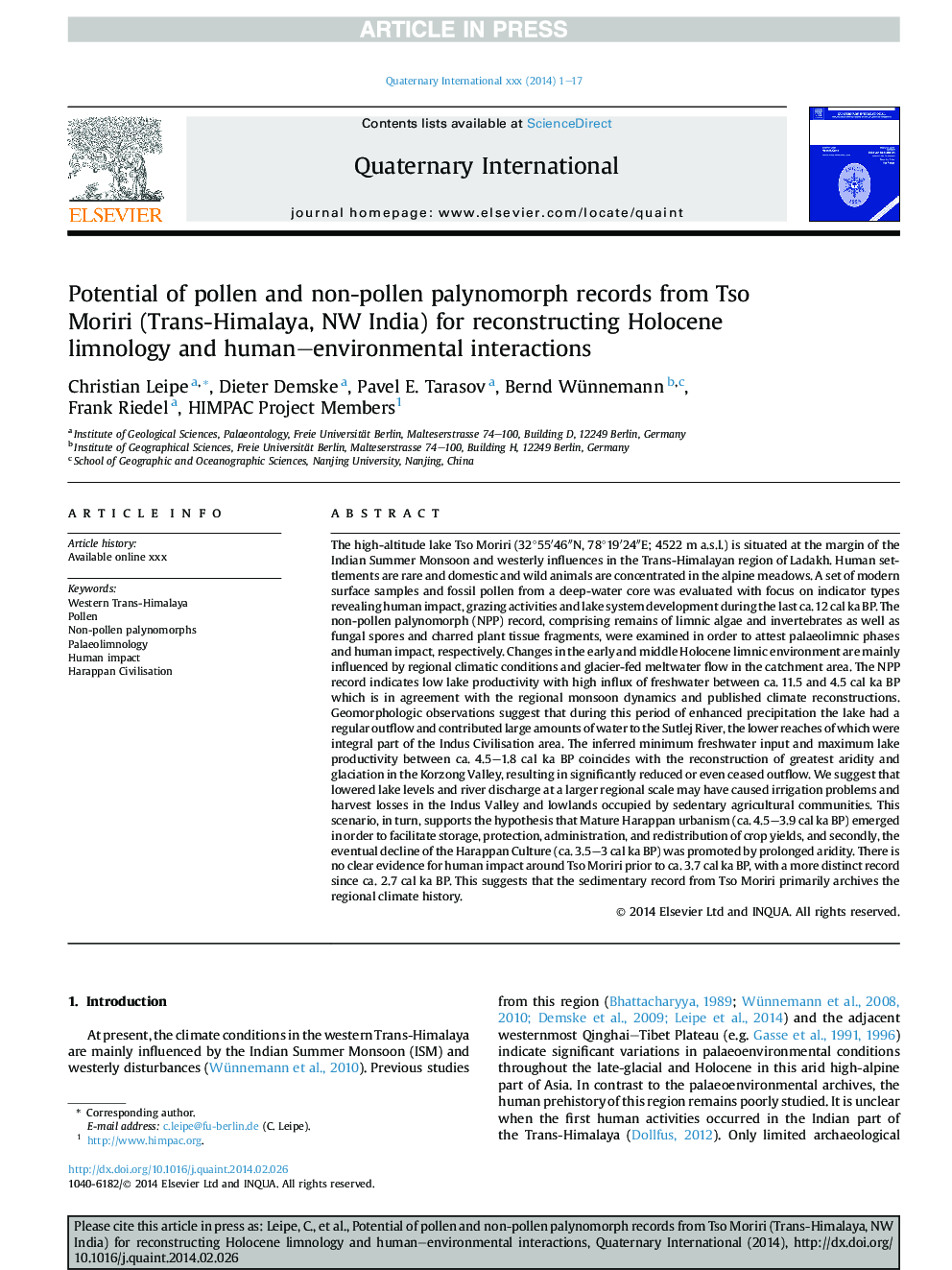| Article ID | Journal | Published Year | Pages | File Type |
|---|---|---|---|---|
| 7452169 | Quaternary International | 2014 | 17 Pages |
Abstract
The high-altitude lake Tso Moriri (32°55â²46â³N, 78°19â²24â³E; 4522 m a.s.l.) is situated at the margin of the Indian Summer Monsoon and westerly influences in the Trans-Himalayan region of Ladakh. Human settlements are rare and domestic and wild animals are concentrated in the alpine meadows. A set of modern surface samples and fossil pollen from a deep-water core was evaluated with focus on indicator types revealing human impact, grazing activities and lake system development during the last ca. 12 cal ka BP. The non-pollen palynomorph (NPP) record, comprising remains of limnic algae and invertebrates as well as fungal spores and charred plant tissue fragments, were examined in order to attest palaeolimnic phases and human impact, respectively. Changes in the early and middle Holocene limnic environment are mainly influenced by regional climatic conditions and glacier-fed meltwater flow in the catchment area. The NPP record indicates low lake productivity with high influx of freshwater between ca. 11.5 and 4.5 cal ka BP which is in agreement with the regional monsoon dynamics and published climate reconstructions. Geomorphologic observations suggest that during this period of enhanced precipitation the lake had a regular outflow and contributed large amounts of water to the Sutlej River, the lower reaches of which were integral part of the Indus Civilisation area. The inferred minimum freshwater input and maximum lake productivity between ca. 4.5-1.8 cal ka BP coincides with the reconstruction of greatest aridity and glaciation in the Korzong Valley, resulting in significantly reduced or even ceased outflow. We suggest that lowered lake levels and river discharge at a larger regional scale may have caused irrigation problems and harvest losses in the Indus Valley and lowlands occupied by sedentary agricultural communities. This scenario, in turn, supports the hypothesis that Mature Harappan urbanism (ca. 4.5-3.9 cal ka BP) emerged in order to facilitate storage, protection, administration, and redistribution of crop yields, and secondly, the eventual decline of the Harappan Culture (ca. 3.5-3 cal ka BP) was promoted by prolonged aridity. There is no clear evidence for human impact around Tso Moriri prior to ca. 3.7 cal ka BP, with a more distinct record since ca. 2.7 cal ka BP. This suggests that the sedimentary record from Tso Moriri primarily archives the regional climate history.
Related Topics
Physical Sciences and Engineering
Earth and Planetary Sciences
Geology
Authors
Christian Leipe, Dieter Demske, Pavel E. Tarasov, Bernd Wünnemann, Frank Riedel, HIMPAC Project Members HIMPAC Project Members,
